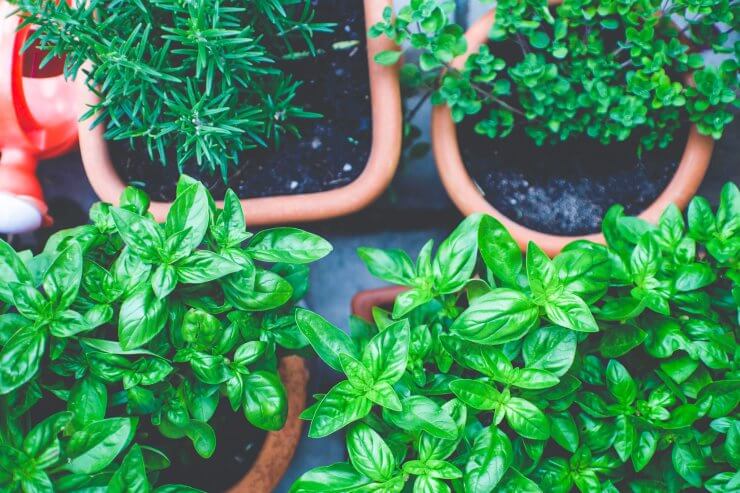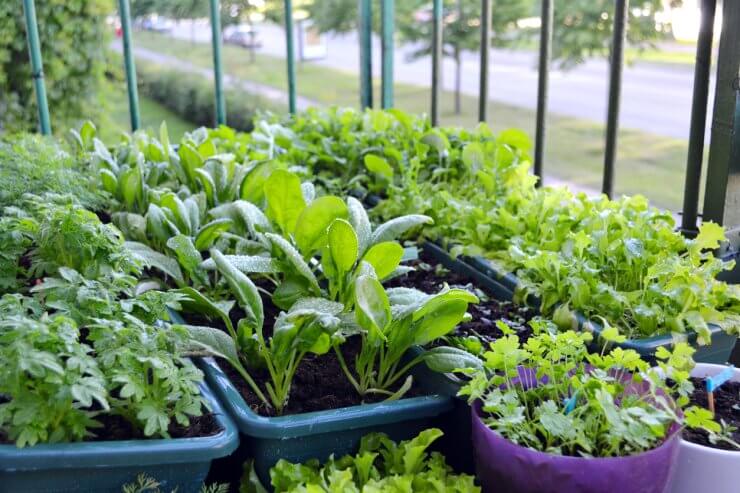
Okay, maybe learning how to fertilize container vegetables isn’t the best-kept secret in gardening, but for years it sure as heck felt like it. I can’t begin to tell you how many plants I over or under-fertilized throughout the years.
Yellowed or brown wilting leaves signaled, to me, that the plants needed more water and fertilizer. Unfortunately for those plants, that’s precisely the opposite of what they needed. They were exhibiting the signs of fertilizer burn. But who among us hasn’t killed a vegetable or two in the garden?
Here’s what I learned from the experience, but first, let’s go over some container growing basics and a few fertilizer topics.
Discover 7 top tips for growing, harvesting, and enjoying tomatoes from your home garden—when you access the FREE guide The Best Way to Grow Tomatoes, right now!

Containers, fertilizers, and bears! Oh my!
Growing vegetables in containers is a somewhat different activity than growing them in the ground. The nutrients in the soil get depleted more quickly, it gets warmer or cooler more quickly, and, depending on the container material, the soil could dry out or retain too much moisture. In other words, ya’ gotta keep a close eye on things. And be sure to use the appropriate sized container for your vegetables, too.
Then we come to fertilizers, which are anything but uniform. You can find fertilizers that are based on anything from kelp to fish emulsion to bone meal. Then there is that famous NPK combo, which stands for nitrogen, phosphorous, and potassium. The numbers correspond to the percentage of each nutrient in the mixture, all of which are necessary for healthy plants.
Nitrogen is essential for overall plant health and growth. Phosphorous helps develop healthy roots and fruits. Potassium supports stem growth and general plant health. You’ll see these numbers always in the same order (N, P, and K), but they can vary a lot. So a balanced fertilizer may have the numbers 10-10-10 or 8-8-8. A blend of 10-7-7 would be a little heavier on the nitrogen.
Is there a “right” blend for container vegetables? Miracle Grow offers an 18-18-21 plant food blend, Masterblend has a 4-18-38 combination for tomatoes and vegetables, or you can get a Dr. Earth organic blend with a 4-6-3 ratio. Coast of Maine sells a 1-2-0 blend made of crab shells, which also contains chitin. Chitin is a naturally occurring biopesticide that can help deter harmful nematodes and some fungi.
Like so many things in gardening, the right blend is somewhat dependent on what you need. When in doubt, however, more is not necessarily better. If you go with lower NPK numbers, you can always add more, but if higher numbers end up being too much, you can’t take it back out.
How to fertilize container vegetables so they’ll be healthy and productive
Now then, adjusting for different container materials and fertilizer strengths, let’s talk about how to fertilize container vegetables without overdoing it.
The first step? Read the directions on the package of fertilizer. In fact, if you do nothing else, reading (and following!) the package directions will do wonders for you. There are hundreds of formulations on the market, all with different focuses. So, again, if you want to figure out how to fertilize container vegetables the right way, read the package directions!
It’s worth noting, too, that organic and natural fertilizers are less likely to burn your plants than chemical-based fertilizers.
Here are some other things to consider:
- As a general rule, you can fertilize your container vegetables about once every two weeks with a product that has lower NPK numbers.
- Some plants, such as tomatoes, are heavy feeders and will need more fertilizer.
- If you use fresh potting mix for your plants, many of them already contain nutrients. That won’t last indefinitely, but do check the label.
- Your herbs are probably fine without fertilizer.
- Your vegetables may need a little pick-me-up when they begin flowering or fruiting.
Have you given much thought to how to fertilize container vegetables? What tips would you share?
Discover 7 top tips for growing, harvesting, and enjoying tomatoes from your home garden—when you access the FREE guide The Best Way to Grow Tomatoes, right now!




